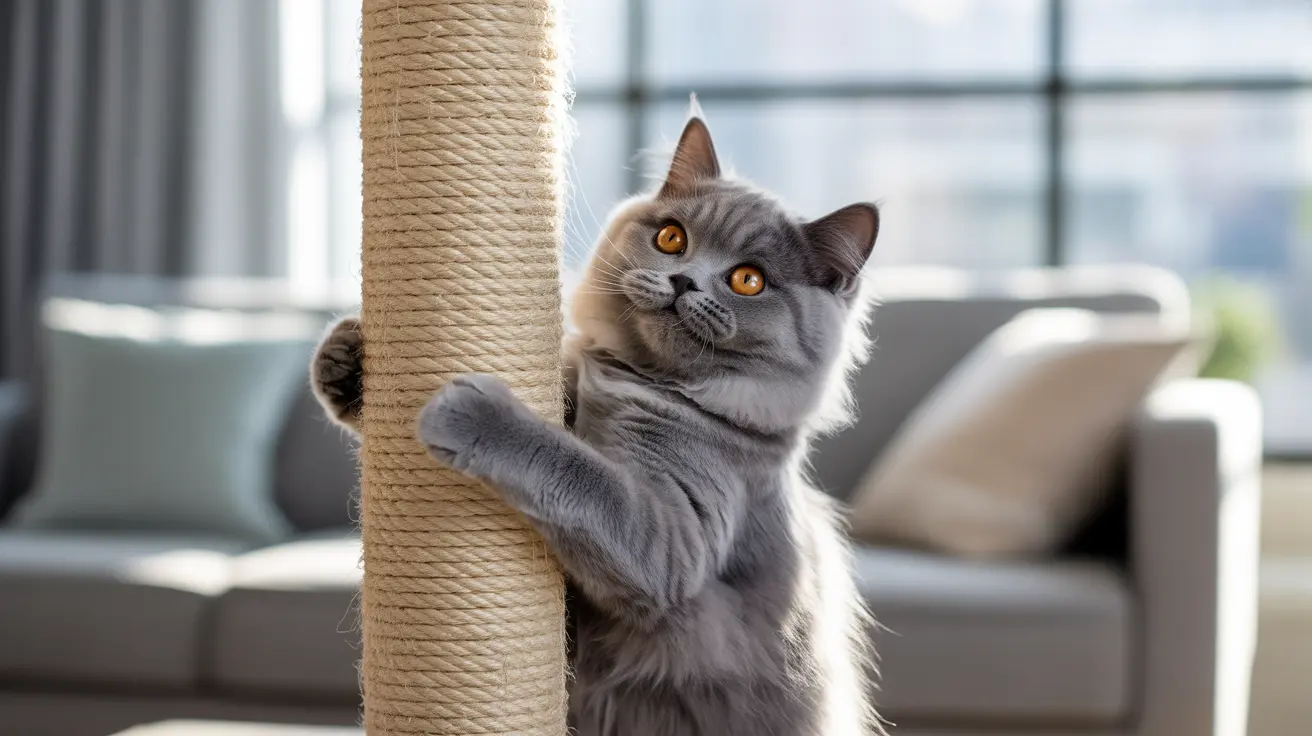Essential Tools for Cat Claw Maintenance
Before beginning any claw maintenance routine, it's important to gather the right tools:
- Cat-specific nail clippers (scissor-style or guillotine)
- Styptic powder for emergency bleeding
- Treats for positive reinforcement
- A towel for gentle restraint if needed
- Good lighting or a small flashlight
Safe and Effective Claw Trimming Techniques
Regular trimming is the foundation of keeping cat claws dull. Follow these steps for safe trimming:
- Choose a quiet, comfortable location
- Hold your cat gently but securely
- Press the paw pad to extend the claw
- Identify the quick (pink area containing blood vessels)
- Trim only the sharp tip, avoiding the quick
- Reward your cat after successful trimming
Timing and Frequency
Most cats need their claws trimmed every 2-4 weeks. Indoor cats typically require more frequent trimming than outdoor cats, as natural activities don't wear down their claws as much.
Natural Methods to Dull Cat Claws
Proper Scratching Posts
Providing appropriate scratching surfaces is essential for natural claw maintenance:
- Tall, sturdy vertical posts
- Horizontal scratching pads
- Various textures (sisal, cardboard, carpet)
- Multiple locations throughout the home
Environmental Enrichment
Create an engaging environment that encourages natural claw wear:
- Cat trees with rough surfaces
- Climbing structures
- Interactive play areas
- Outdoor enclosures (if possible)
Alternative Solutions
Nail Caps and Covers
Plastic claw caps offer a temporary solution for cats with particularly sharp claws. These need to be replaced every 4-6 weeks as natural claw growth occurs.
Professional Grooming
If you're uncomfortable trimming your cat's claws, professional groomers and veterinarians offer this service and can demonstrate proper technique.
Training Tips for Successful Claw Maintenance
Start claw maintenance training early and use these strategies:
- Begin handling paws when your cat is relaxed
- Use positive reinforcement consistently
- Keep sessions short and positive
- Practice regularly, even without trimming
- Always remain calm and patient
Frequently Asked Questions
How often should I trim my cat's claws to keep them dull and prevent damage?
Trim your cat's claws every 2-4 weeks, depending on their activity level and growth rate. Indoor cats typically need more frequent trimming than outdoor cats.
What is the safest way to trim a cat's claws without cutting into the quick and causing pain?
Only trim the transparent tip of the claw, staying well away from the pink quick. Use proper cat nail clippers and good lighting to ensure visibility. If unsure, trim less rather than risk cutting too close.
How do plastic claw caps work to keep my cat's claws dull and protect furniture?
Plastic claw caps are glued onto trimmed claws and provide a soft covering that prevents scratch damage. They naturally fall off as the claw grows and need replacement every 4-6 weeks.
Can nail grinders be used safely on cats, and how do I acclimate my cat to them?
Yes, nail grinders can be used safely, but require patience during acclimation. Start by letting your cat investigate the turned-off grinder, then gradually introduce the sound and vibration over several sessions before actual use.
What are the best types of scratching posts or surfaces to naturally dull my cat's claws?
The best scratching surfaces include sisal rope posts, cardboard scratchers, and carpet-covered posts. Provide both vertical and horizontal options at least as tall as your cat's full stretch, and ensure they're sturdy enough to withstand vigorous scratching.
Conclusion
Maintaining dull cat claws requires a combination of regular trimming, appropriate scratching surfaces, and patient training. By implementing these methods consistently and choosing the right tools and techniques, you can effectively manage your cat's claws while keeping both your pet and your home happy and healthy.






